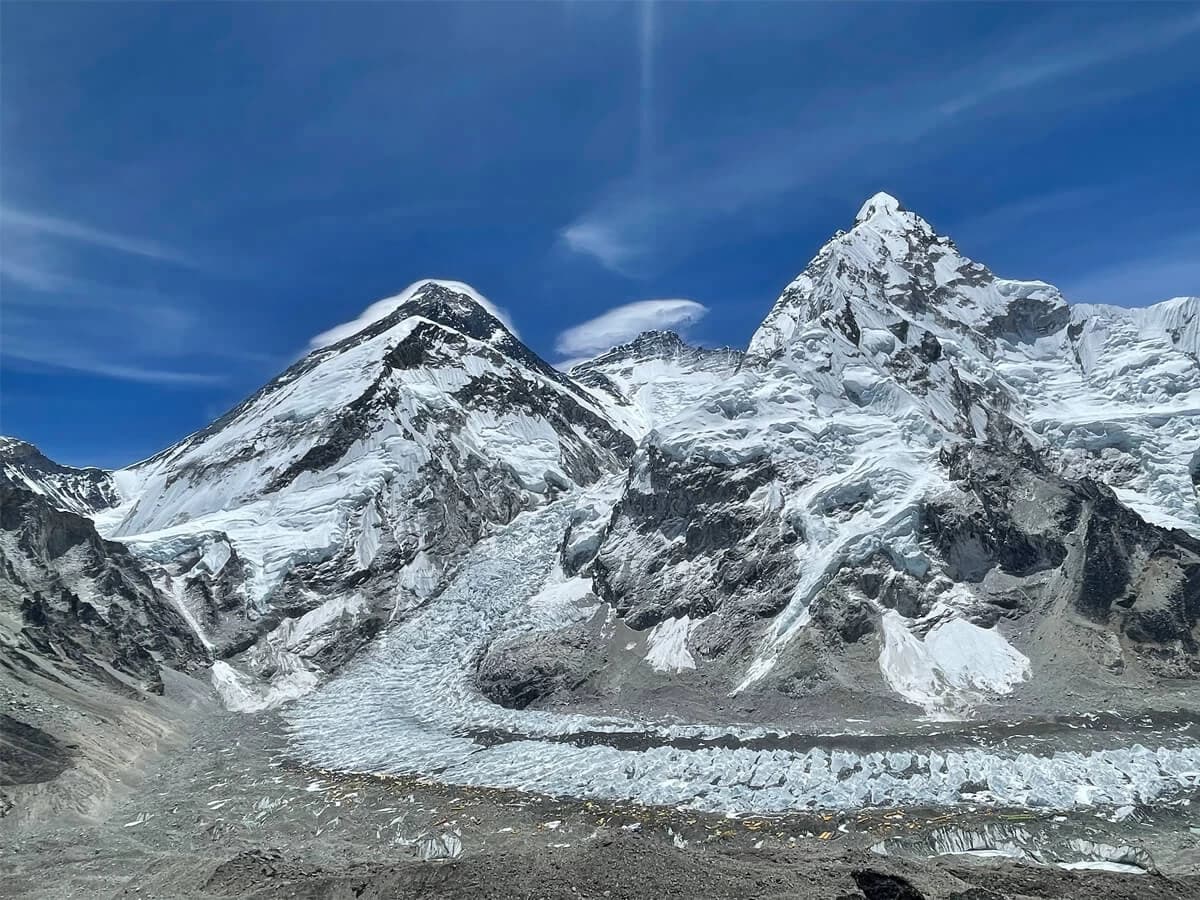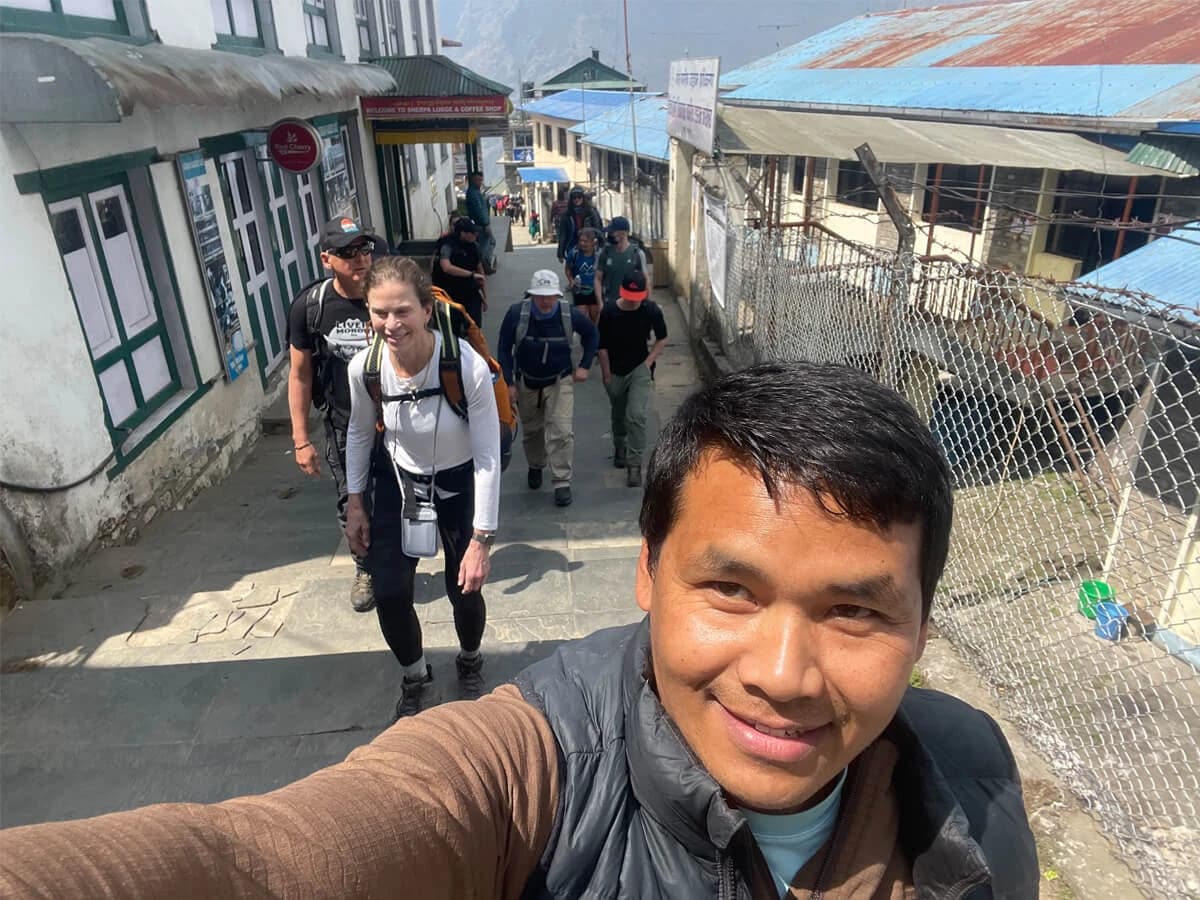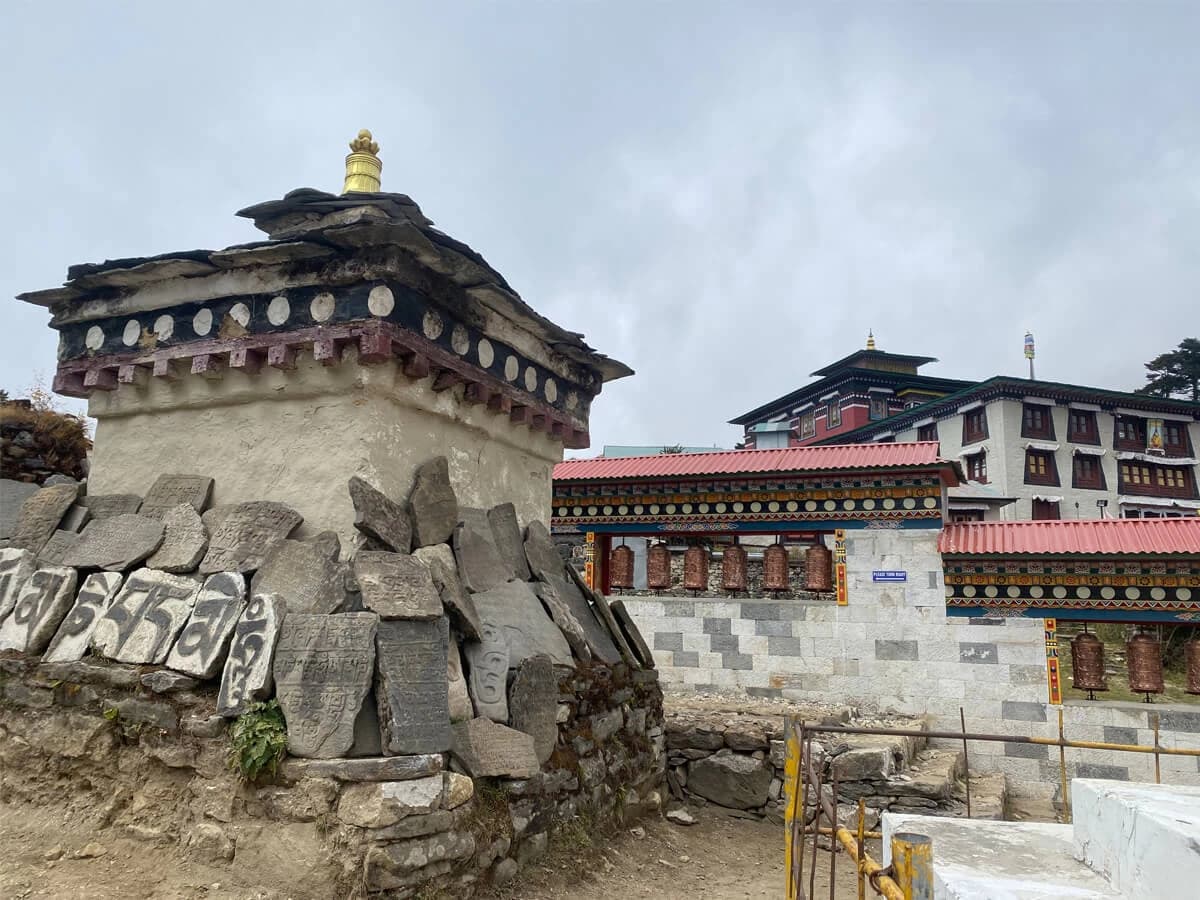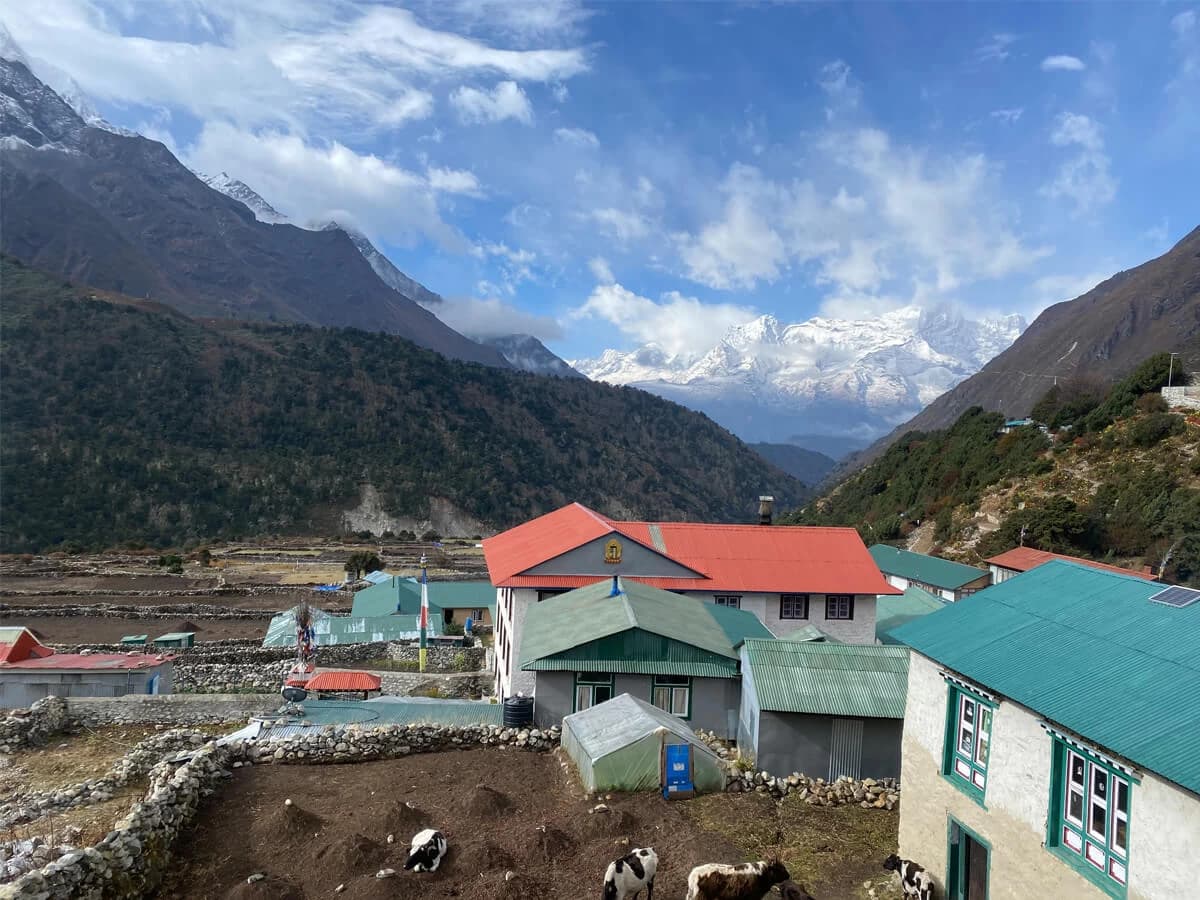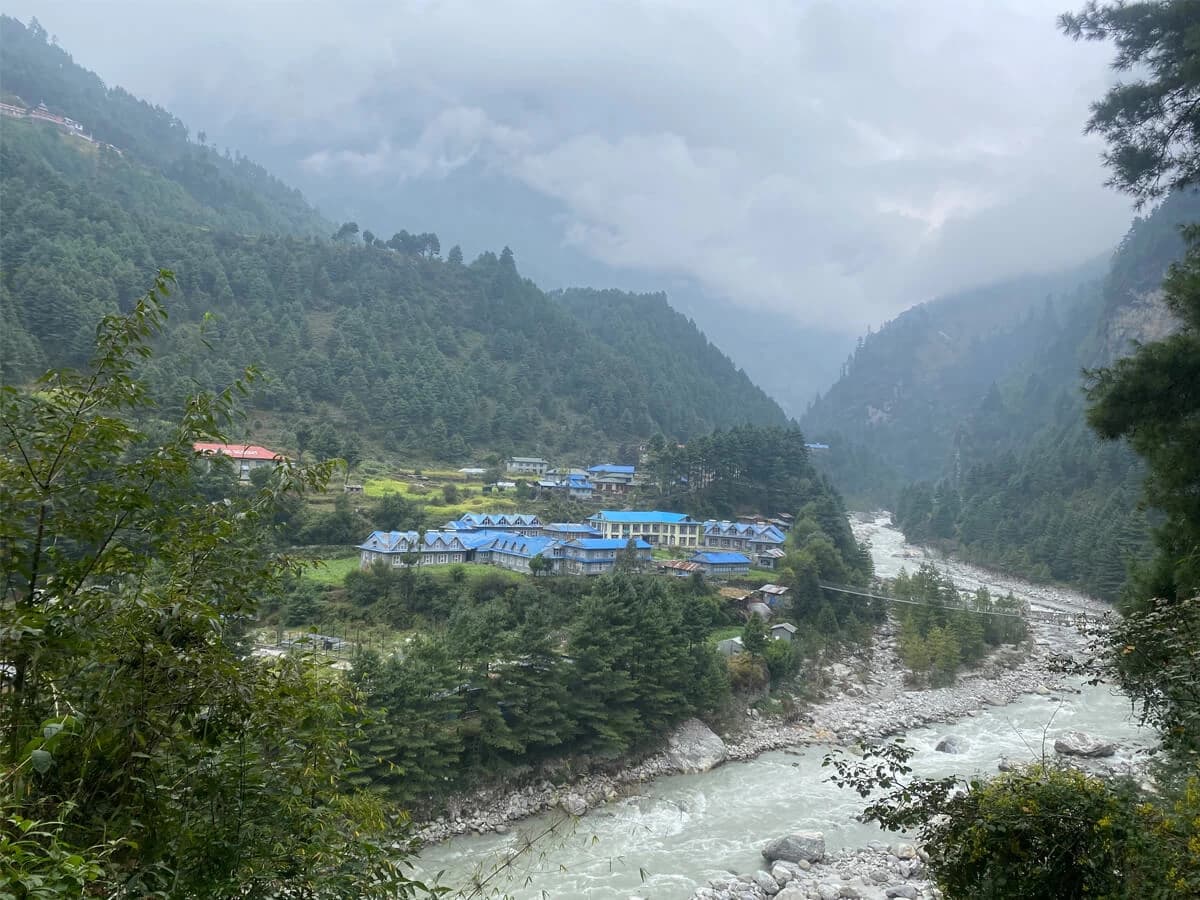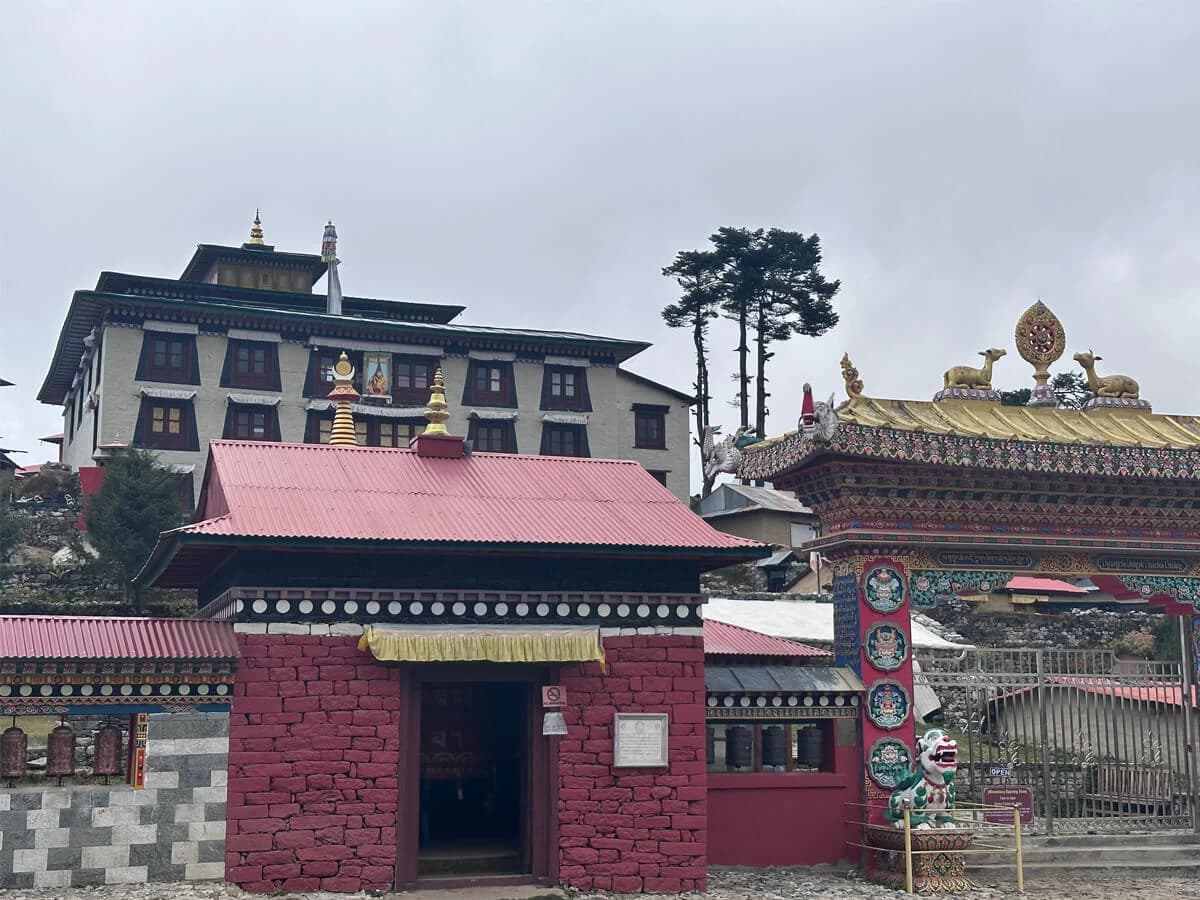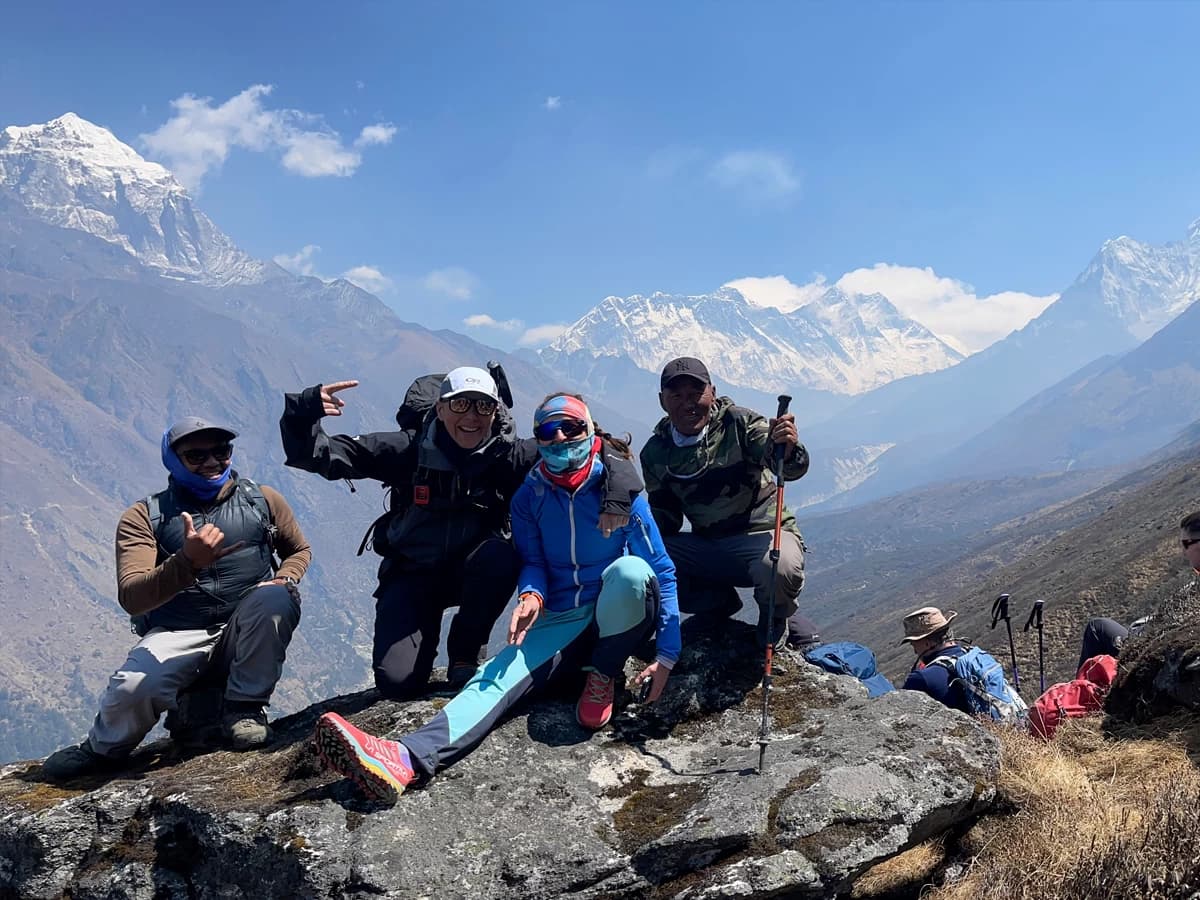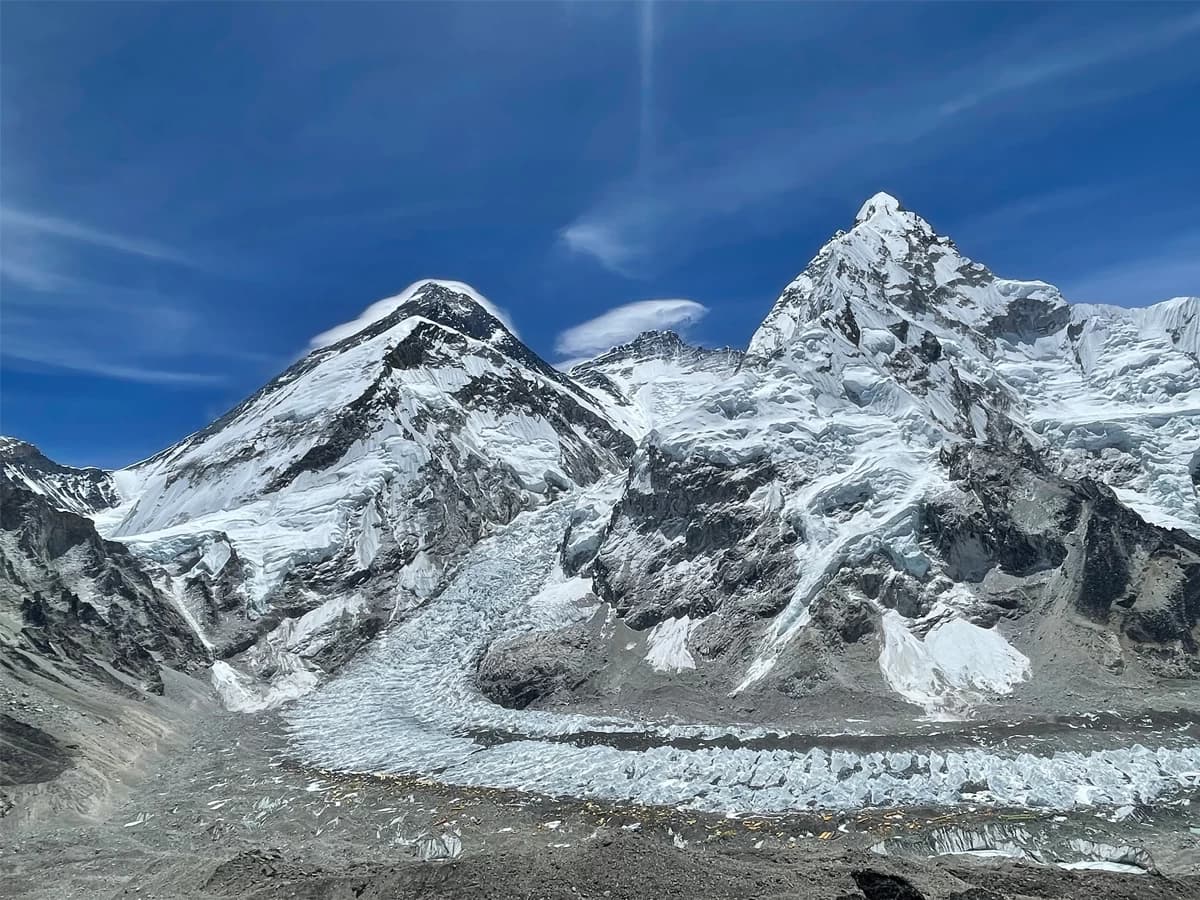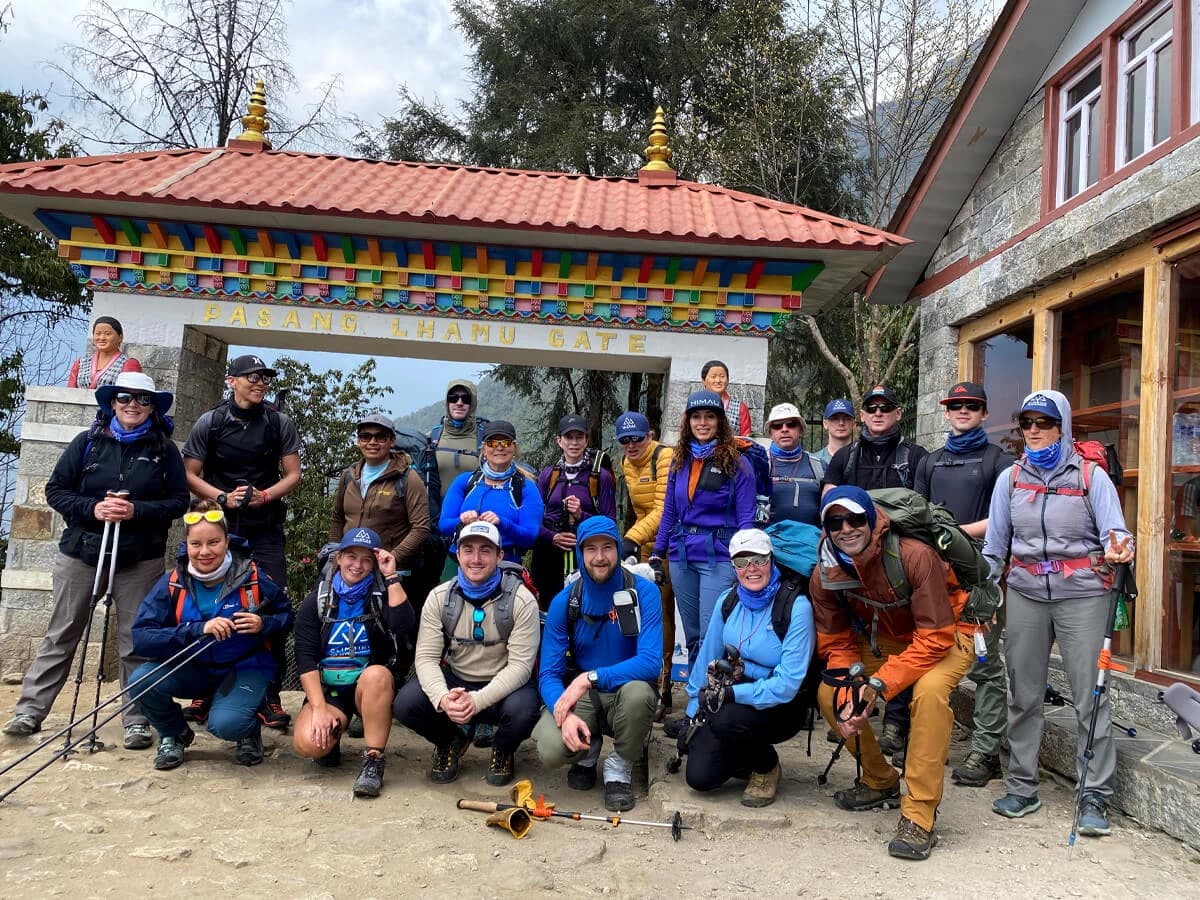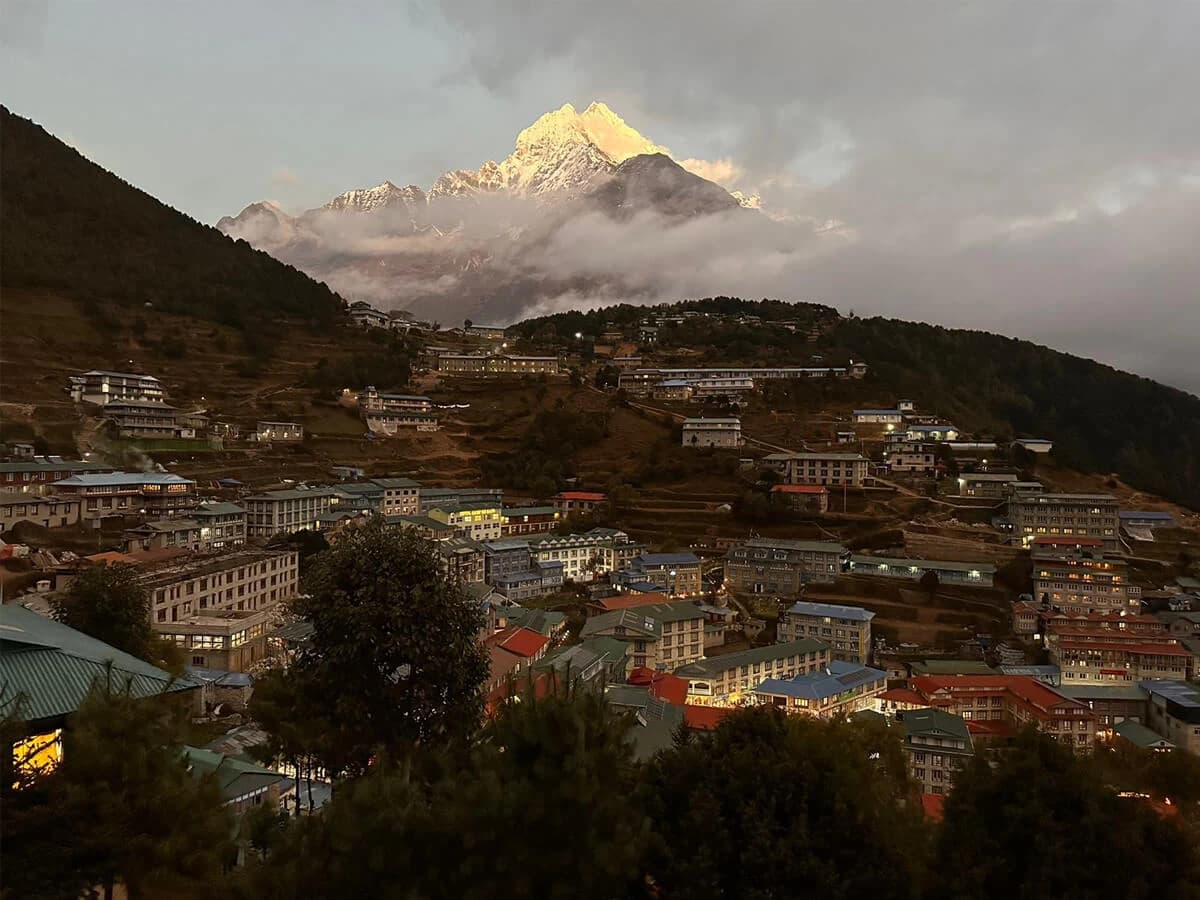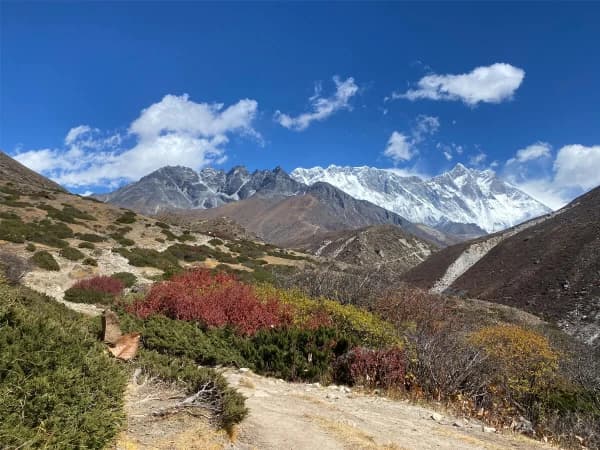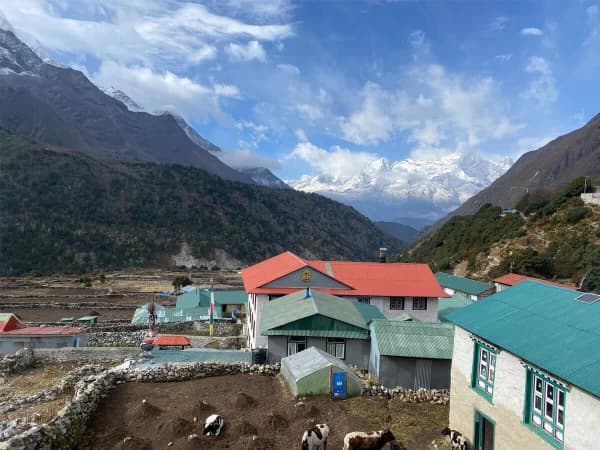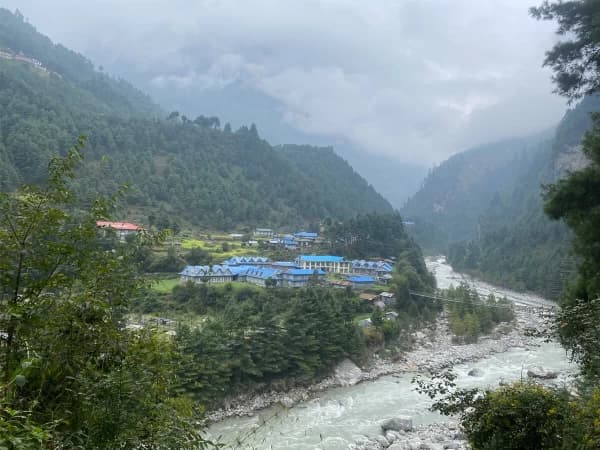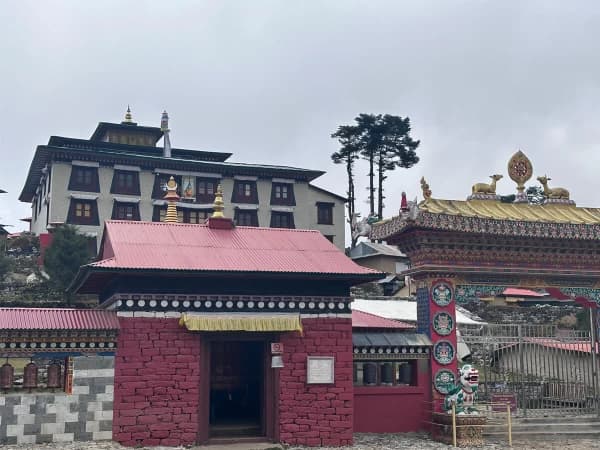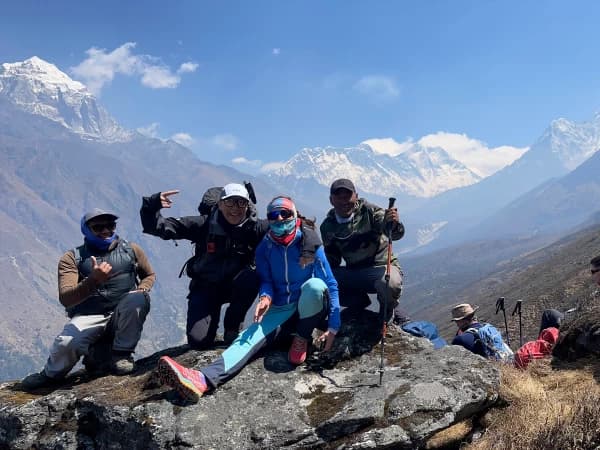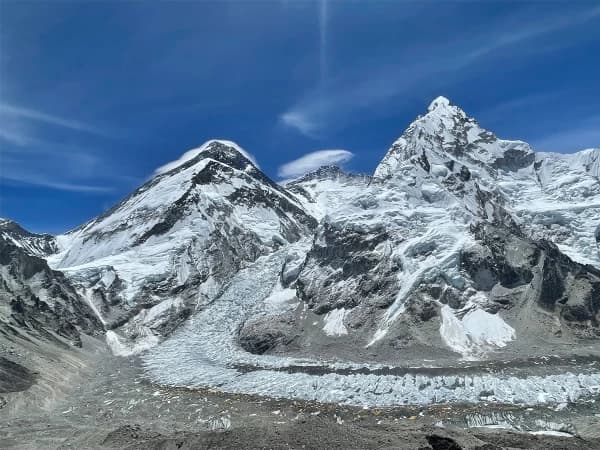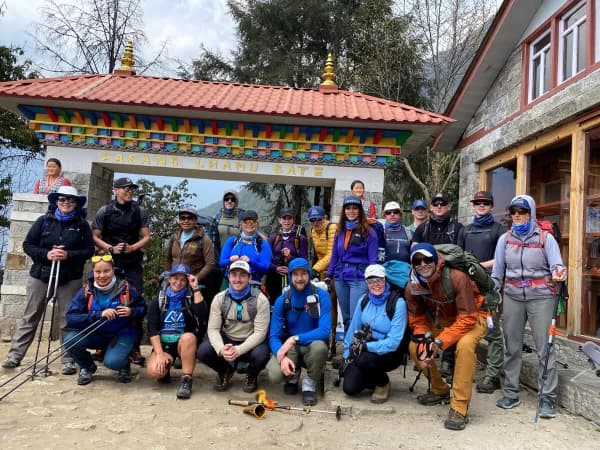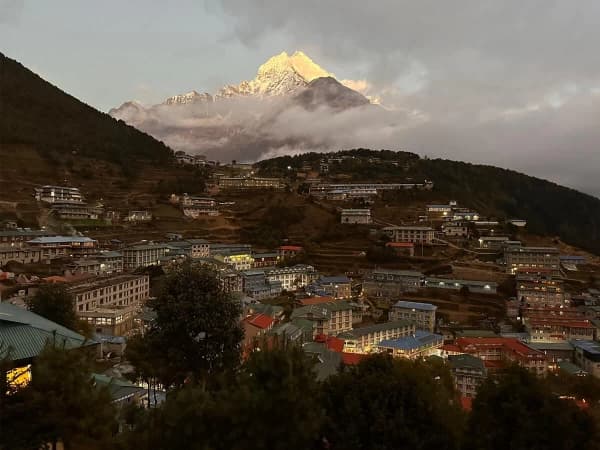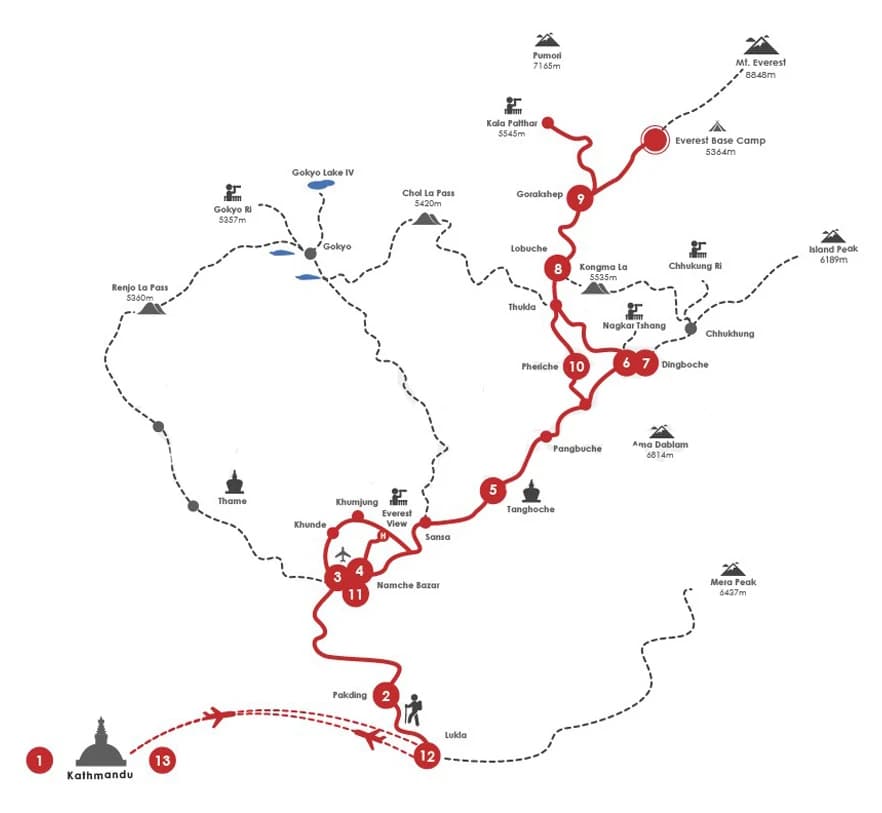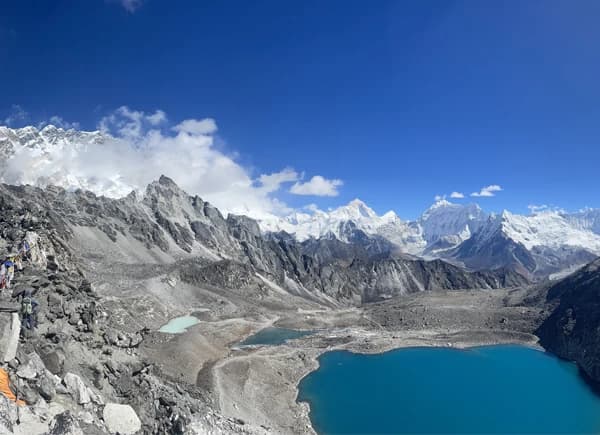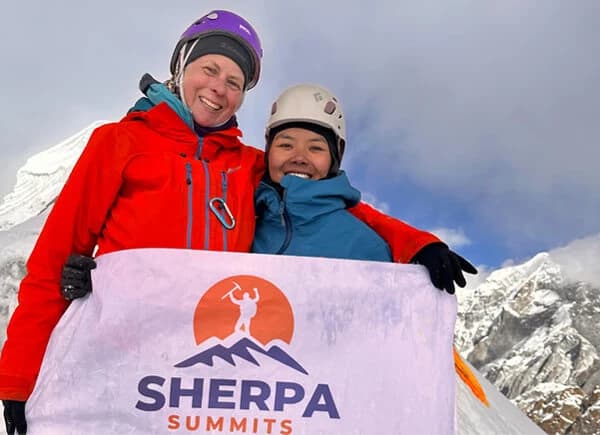Everest Base Camp Trip Overview
Everest base camp trek is one of the famous trekking destination of Nepal, where huge people are come to trek in trekking season. Everest base camp is situated in SoluKhumbu district Everest region at an altitude of 5,364 meters above sea level which is the highest base camp of the Nepal. Everest base camp is everyone dream destination to see the world highest Mount Everest.
The areas are specially inhabited by the Sherpa community people in the high mountain areas and Magar, Tamang, and Rai community people at lower hilly parts of the Solukhumbu district. Everest region is fascinated by its surrounding Himalayas, including world highest mountain Everest 8,848.86 meter above sea level which is everyone dream mountain to see it in real. Likewise there are several snow-covered mountains and rocky hills, landscapes, forests, rivers, waterfall, and glacier lakes which really provides the mesmerizing views of natural beauty of area.
Highlights
- Get incredible panorama views of the world’s highest mountain Mt. Everest 8,848.86 meters.
- Witness the awe-inspiring Khumbu Glacier, the largest glacier in Nepal.
- Experience the unique Sherpa culture and visit charming villages like Namche Bazaar and Tengboche Old Monastery.
- Hike to Kalapatthar a viewpoint at 5,545 meters for spectacular sunrise views of Mt. Everest and surroundings.
- Trek through the Sagarmatha National Park, a UNESCO World Heritage site, and encounter diverse flora and fauna including snow leopards, yak, and Himalayan Thar.
- Experience the famous Mani Rimdu festivals of the Sherpa community people.
- Spectacular views of Mt. Everest, Kwangde Ri, Lhotse, Lobuche, Amadablam, Cho Oyu, Nuptse, Pumori, Cholatse, and several other mountains.
- Pass through Hillary Bridge to reach Namche Bazar, the gateway of the Everest region.
What things can be Experience and Explore in the Everest Base Camp Trekking?
Everest base camp trek is a popular trekking destination among the others. Most trekkers prefer to trek in this region because it is the home of the world’s highest mountain Everest (8,848.86 meters/29,030 feet). Everest base camp is situated at an altitude of 5,364 meters/ 17,598 feet above sea level. It is located in eastern Nepal of Solu Khumbu district’s Khumbu region and south base camp is in Nepal and the north base camp is at 5,150 meters in Tibet. Mount Everest is also called the Chomolungma by the Sherpa and Tibetan people another is the Sanskrit name Sagarmatha means literally “Peak of Heaven.” Mount Everest was also previously referred to as Peak XV it was renamed for Sir George Everest in 1865. It is the female god or goddess mother of the world’ and goddess of the valley although local people worship it as a god.
Everest base camp trek is an iconic adventure that takes you to the heart of the Himalayas offering breathtaking views of the world’s highest mountain and its surrounding peaks. Everest base camp trek is more convenient with well-maintained trek routes and accommodation as well as tourists attracted destination. Not only that this region provides warm hospitality facilities to the tourists from the Sherpa community’s people. The region is largely inhabited by the Sherpa indigenous people where you can also learn and experience Sherpa culture this adventure not only brings you to the base camp of the world’s highest peak but also immerses you in the rich culture and traditions of Nepal.
This 15-day Everest base camp trek takes you to an elevation of 5,364 meters experiencing lovely Sherpa people's cultural traditions and trying and tasting their local authentic foods festivals. Exploring the ancient monasteries such as the renowned Tengboche Monastery, stupa, and Mani wall. The trek usually takes you through pine forest rhododendrons forest verdant forests, farmland, amazing alpine meadows hills, and mountains crossing the bridges and some rocky trail valleys up and down. This trek provides mesmerizing views of Mount Kongde Ri (6,187m/20,299ft) mount Ama Dablam (6,812m/22,349ft), mount Lhotse (8,516 m/27,940ft) mount Nuptse (7,861m/25,791ft) mount Lobuche (6,119m/20,075ft) mount Pumori (7,161m/23,494ft) Cho Oyu (8,201m/26,906ft) the others peaks and the iconic Mt. Everest (8,848.86m/29,030ft) itself as well as the Khumbu Glacier.
The EBC trek journey begins with a breathtaking 35-minute flight from Kathmandu to Lukla in the month of January February June July August September and December or a 20 minutes flight from Manthali/ Ramechhap to Lukla including an approximately 5 to 6 hours’ drive from Kathmandu to Manthali in the month of March April May October and November.
Everest base camp trek begins and ends in Lukla Namche Bazar Namche Bazar is a beautiful bustling town with the main trading center of the Everest region and people call it the Thamel of the Everest region likewise also popularly known as an acclimatization destination of the Everest region treks. The journey starts along the beautiful river’s bank of the Dhudkoshi and passes through the Sagarmatha National Park At this distance can see the famous Hillary Bridge although Hillary Bridge is named after Sir Edmund Hillary. National Park ranges in an elevation from 2,845 to 8,848.86 meters to the top of Mt. Everest finally reached in the Namche Bazar the gateway to the top of the world. The Everest base camp trek gives you unforgettable memories with great trekking experiences.
Why does the Everest Base Camp Trek 15 Days?
The Everest base camp or Everest region is everyone's dream destination so to fulfill your dream we are here any time available to give you good quality services at an affordable cost and experienced trekking guide to lead you till the end of your trip, we have designed this 15-day's Everest base camp trek package and itinerary.
This 15-day’s trek will lead you to drive from Kathmandu to Ramechhap Manthali takes 5 to 6 hours by Jeep for the Lukla flight. Especially in March, April, May, October, and November the airline directly could not fly from Kathmandu’s Tribhuvan International Airport to Lukla Airport due to the busy tourist season in Nepal, so most of the Lukla flights operate from Ramechhap instead of Kathmandu airport and it takes 20 minutes to fly from Lukla to Manthali. Although, Lukla to Kathmandu flights only operate in January, February, June, July, August, September, and December this time they are not busy that much and it takes 35 minutes to direct flights from Lukla to Kathmandu.
The Everest base camp trek provides authentic Sherpa cultures and their Himalayan lifestyles, traditions, festivals foods ancient heritages, and the Hidden story of the several places. You can enjoy seeing the countless Mani walls, prayer flags, pagodas, stupas, and monasteries along the trails and in the villages. Will visit the scary monastery Tengboche monastery while trekking it is the oldest and highest monastery in Nepal. Especially Everest region hosts the famous Mani Rimdu festival where lamas perform the scary mask dances it is a 19-day festival celebrated by Buddhists in the Everest region of Nepal to mark the founding of Buddhism by Guru Rinpoche (Padmasambhava) it is celebrated as per the Tibetan lunar calendar which falls between October and November in English calendar. While you are trekking in the given months then do not miss this amazing festival.
Lukla is the gateway of the Everest region explore it and enjoy the panorama vistas of surrounding areas and the mountains. Discover Namche Bazar the trading center of Everest region and the town of the Khumbu pasang Lhamu Rural Municipality. Where you can find numerous accommodation facilities and several shops to purchase trekking gear and local handicrafts goods gift shops as well as experience cultural immersion. While trekking you can see the major mountains on the trail are Mount Kusum, Kangaru, Kwangde Ri, Thamserku, Amadablam, Cholatse, Lobuche, Pumori, Cho Oyu, Nuptse, Lhotse, and Mount Everest etc so, the sight of the mountains are abundant during the trek.
last, the trek usually goes through the pine forests, rhododendron forests, and alpine meadows crossing the Dhudkoshi River, Imja River, and several waterfall valleys up, down, and straights toward Everest base camp trek. Along the way, you can see the wilderness animals such as Himalayan Thar, Blue sheep, and Yaks as well as a variety of flora of high altitude regions. This trek offers close snow-capped captivating views of the world’s highest mountain Mt. Everest (8,848.86m/29,031ft) containing Cho Oyu (8,201m/26,906ft), Lhotse (8,516m/27,940ft), Aamdablam (6,812m/22, 349ft), Lobuche (6,119m/20,075ft), Pumori (7,161m/27,494ft), Nuptse (7,861m/25,791ft), Thamserku (6,608m/21,680ft), Kongde Ri (6,187m/20,299ft), Khumbu Glacier With elevations of 4,900m (16,100ft) at its terminus to 7,600m (24,900ft) at its source, it is the world's highest glacier, Khumbu Icefalls (5,486m/17,999ft), Gokyo lake (the glacial lake 4,700–5,000m /15,400–16,400ft), and others several named peaks.
Are you ready for the Everest Base Camp Trek? How to Prepare for the Journey?
The trek to Everest Base Camp is a challenging but incredibly rewarding adventure. To ensure you are well-prepared for the journey and keep your body healthy and fit. If you are a regular trekker and hiker it can also encourage you to trek successfully without causing any harm related to high altitude sickness. Manage your gear and equipment for your Everest base camp trek purchase good quality warm trekking equipment for yourself that can be used for a long time so, invest money only for quality products to protect your body from the cold and harsh weather conditions in the high elevation.
Physical Fitness
- Cardiovascular Endurance: Build your stamina with activities like hiking, running, swimming, or cycling. Aim for at least 30 minutes of moderate-intensity exercise most days of the week.
- Strength Training: Focus on lower body exercises (squats, lunges, calf raises) to strengthen your legs, which will be crucial for the trek.
- Flexibility: Incorporate stretching exercises into your routine to improve your range of motion and prevent injuries.
Acclimatization
- Gradual Ascent: Plan your trek with acclimatization days to allow your body to adjust to the high altitude.
- Listen to Your Body: Pay attention to symptoms like headache, nausea, or fatigue. If you experience any of these, rest and consult a medical professional.
Mental Preparation
- Positive Mindset: Cultivate a positive attitude and a strong mental outlook. The trek can be physically demanding, so having a positive mindset will help you overcome challenges.
- Research and Planning: Learn about the trek, its route, and the weather conditions. This knowledge will help you feel more prepared and confident.
Everest Base Camp Trek Packing lists
For the Everest base camp trek, you need the following mentioned things:-
- Head wears: Woolen hats, buff masks, caps, 100% UV-protected sunglasses, UV-protected sunglasses
- Hand wears: Glove thick pair, glove warm pair gore-tax 3 to 4 pairs
- Upper Body wears: Thermal layers and fleece, quick dry T-shirt, gore-tax jacket, warm thick down jacket, soft shell jacket
- Lower body wear: Trekking pants, thermal trousers, gore-tax pants, trekking socks, comfortable trekking boots, slippers
- Miscellaneous: Headlamp, batteries, reusable water bottles, water purification tablets, thermos, trekking pole, raincoats, map, compass, trekking bag, backpack, personal first aid kit, Adapter, charger, power bank, dry fruits, nuts and chocolates, sun protection camera, etc.
- Toiletries: Toilet paper, deodorant, shampoo, soap, wet tissue, toothbrush/toothpaste hand sanitizers, Sun lotion, moisturizer, sunscreen, lip bam, etc.
Get the Best Everest Base Camp Trek Service with Sherpa Summits
We, Sherpa Summits, specialize in crafting unforgettable trekking experiences for both domestic and international adventures in Nepal. Our dedicated team is committed to providing exceptional support throughout your trekking trips. From acquiring essential permits and arranging transportation to handling every logistical detail, we ensure a seamless experience tailored to your preferences.
Enjoy the epitome of quality service at an affordable price with our Everest Base Camp Trek Packages. Whether you’re embarking on a solo adventure or exploring the Himalayas with family, friends, or a partner, your safety and satisfaction are our top priorities. Our expert guides, assistant guides, and trustworthy porters, are fluent in English and other languages, guaranteeing effective communication and cultural exchange.
Customize your Everest Base Camp Trek to align perfectly with your desires. Select your preferred departure date, group size, and daily itinerary. We welcome trekkers of all ages, as long as you possess the necessary physical and mental fitness. Rest assured, there are no hidden costs involved and you will receive transparent pricing for your trek.
Embark on the adventure of a lifetime with Sherpa Summits. Our Everest Region Trek bookings for 2025 and 2026 are now open. Don’t hesitate to contact us for any inquiries or to start planning your dream Himalayan expedition.
